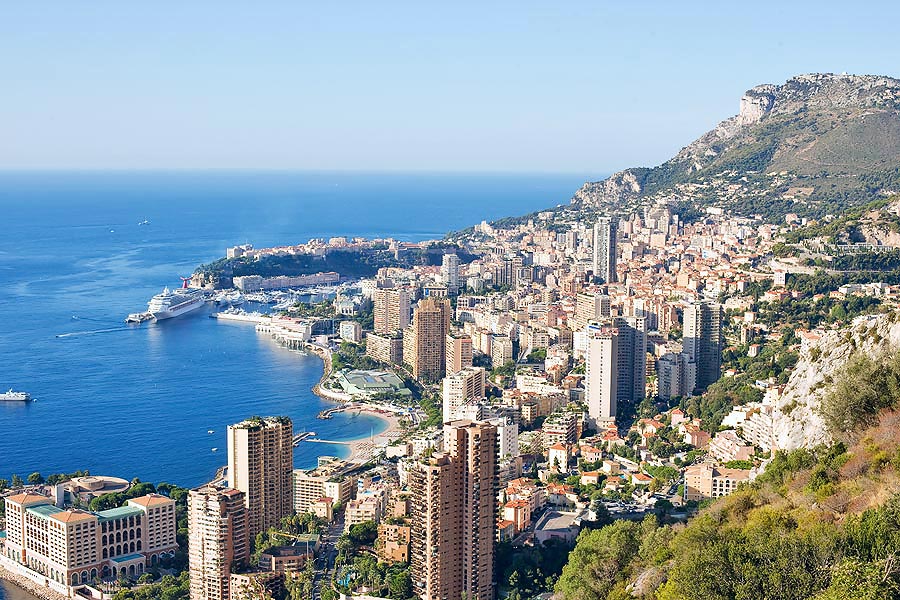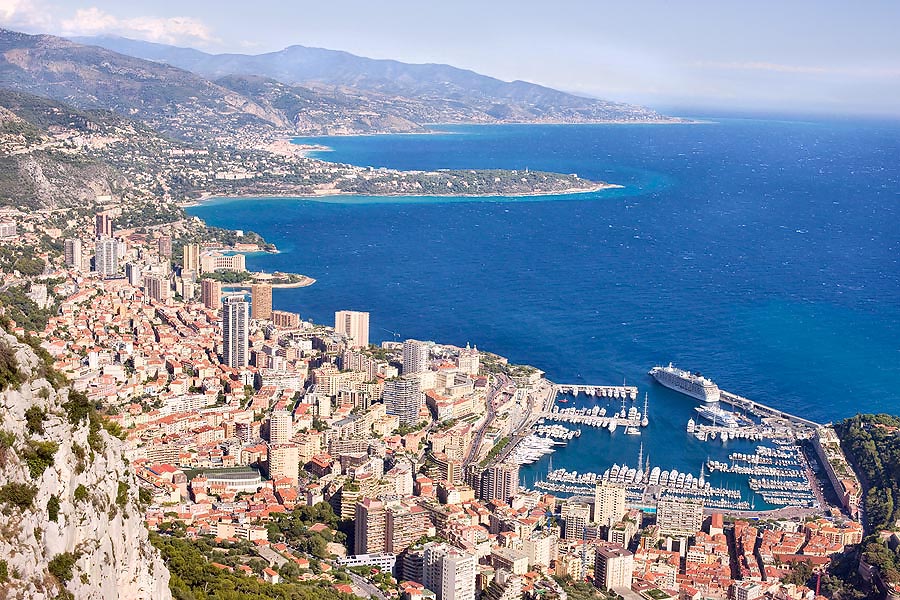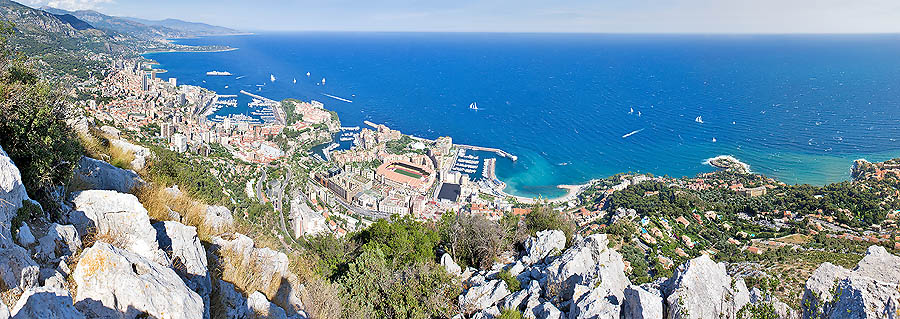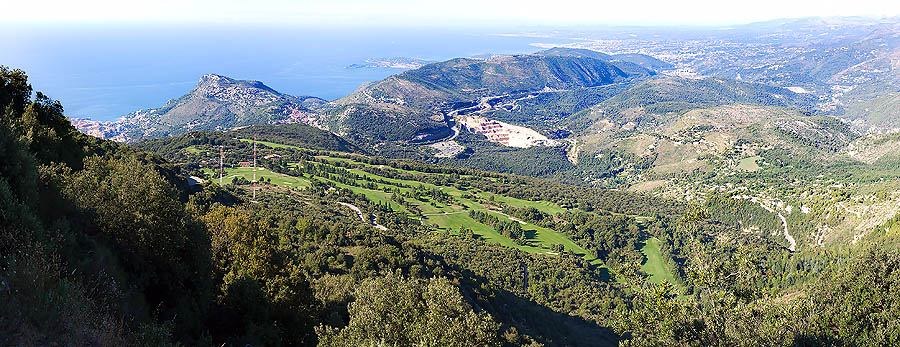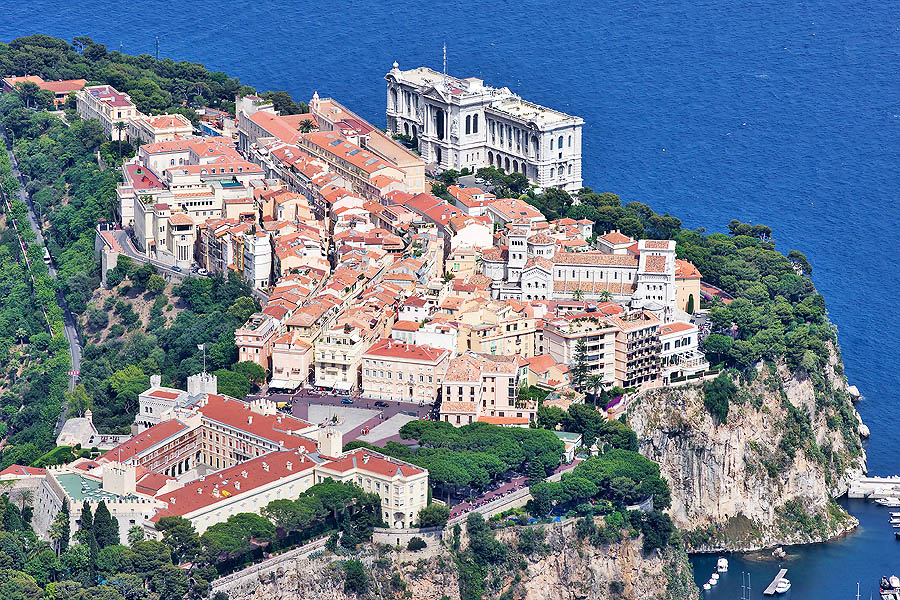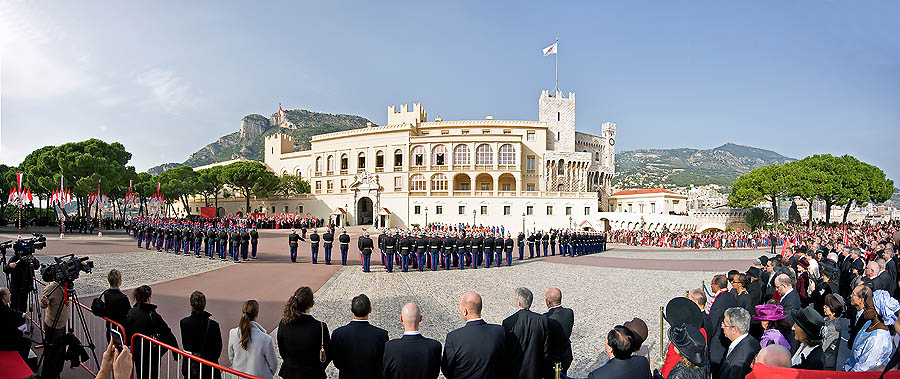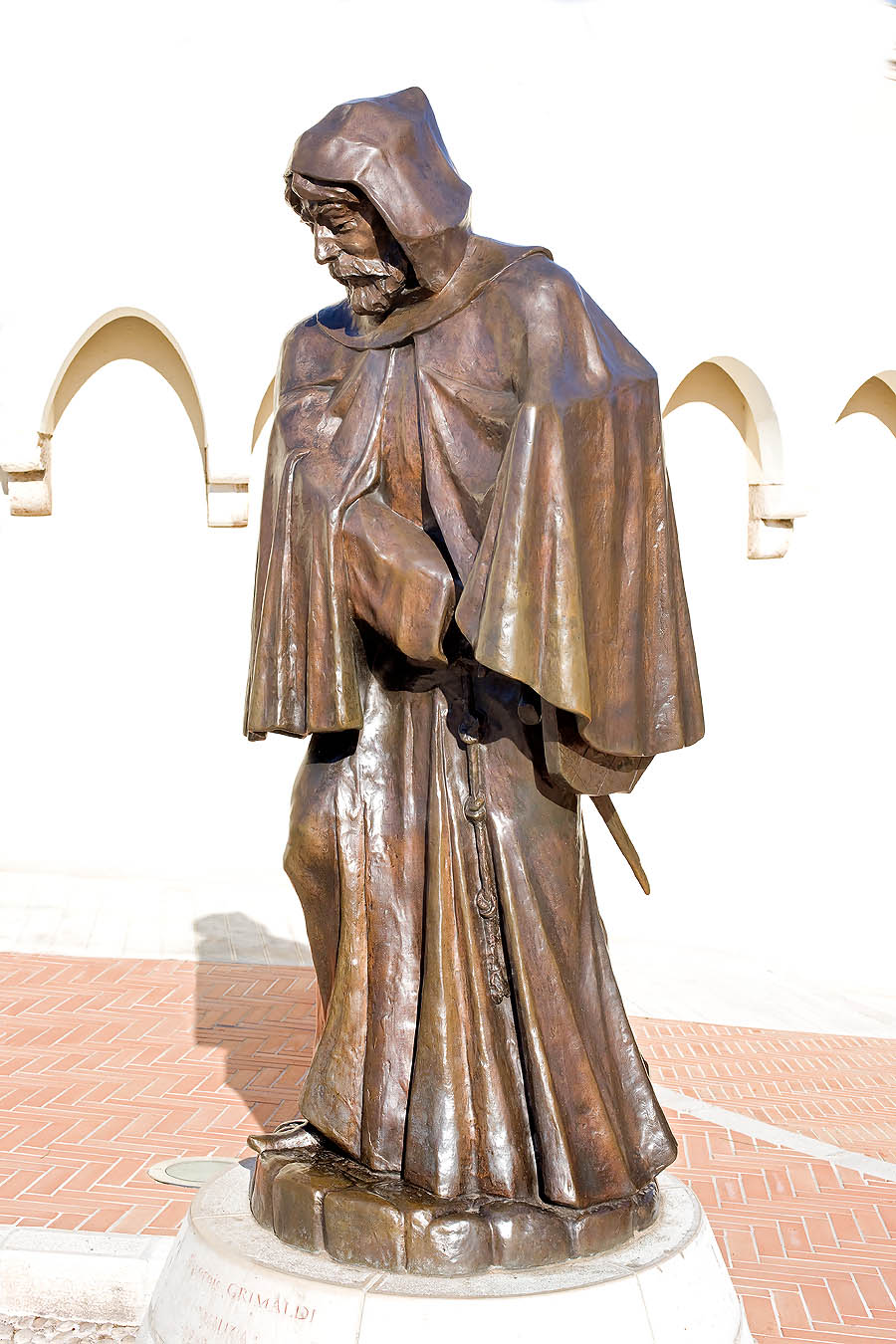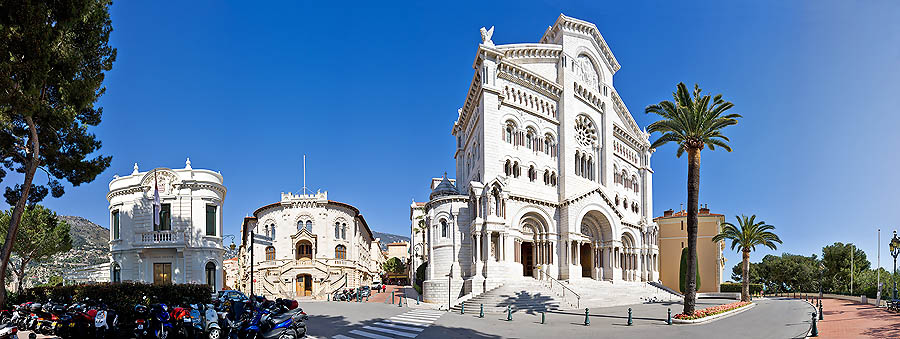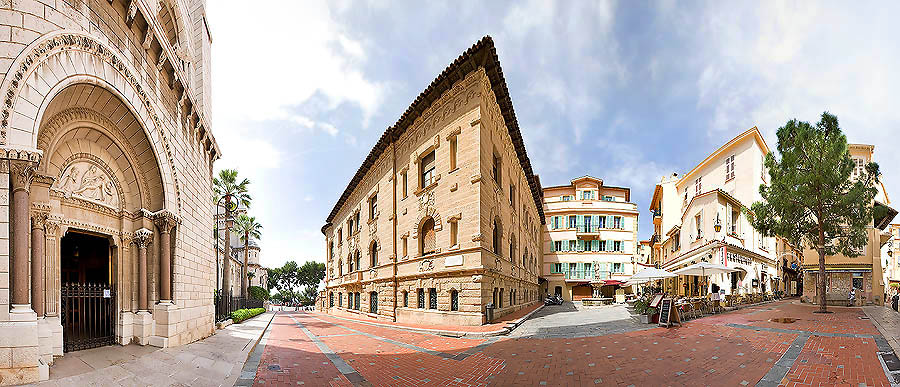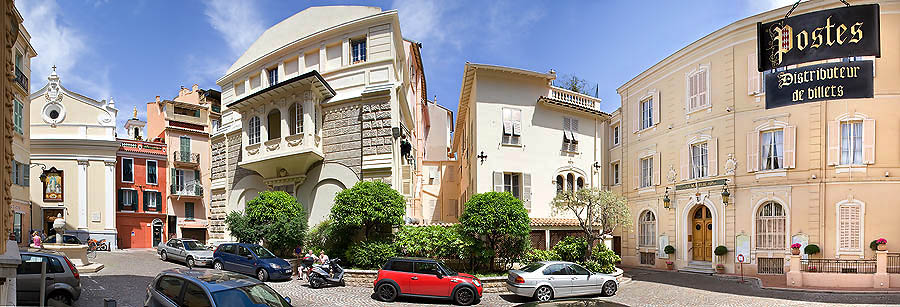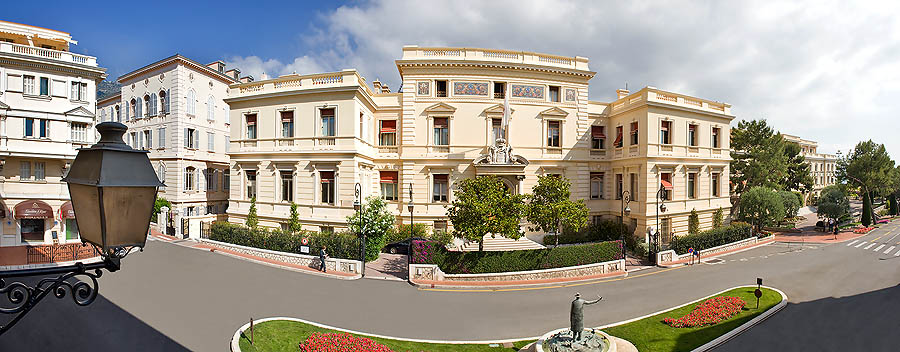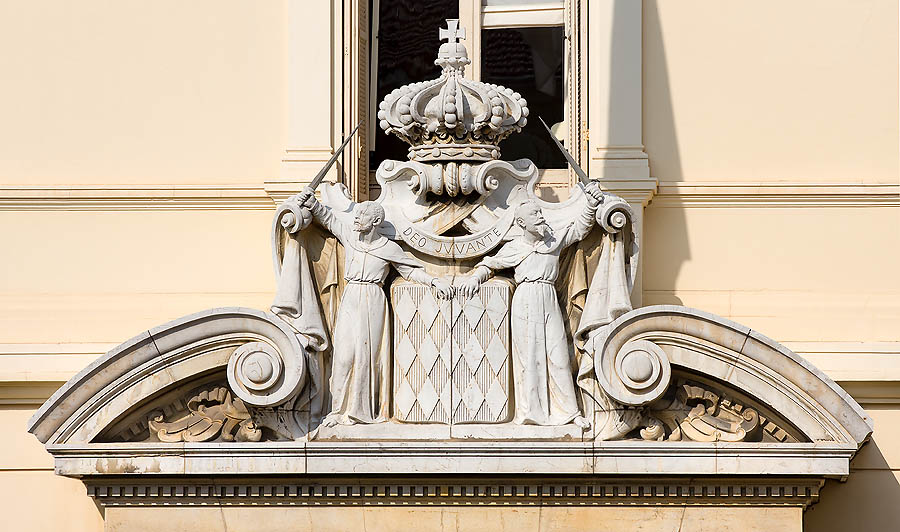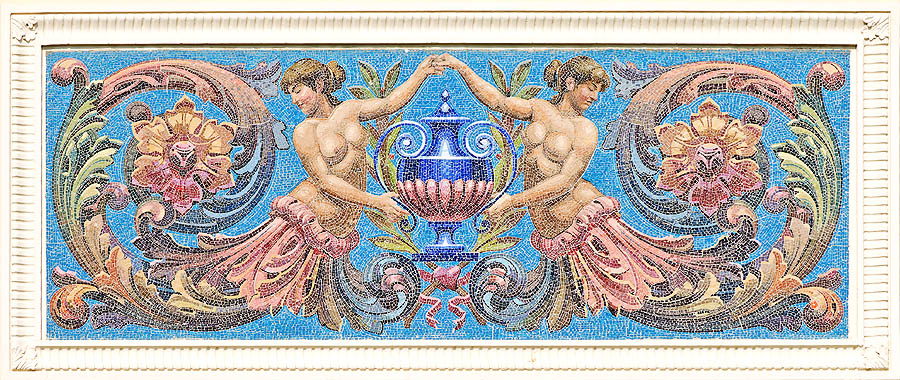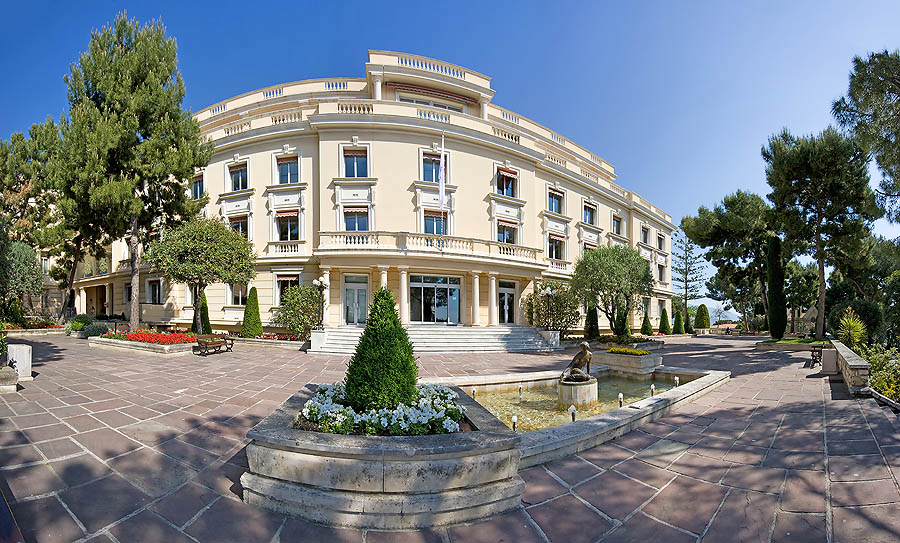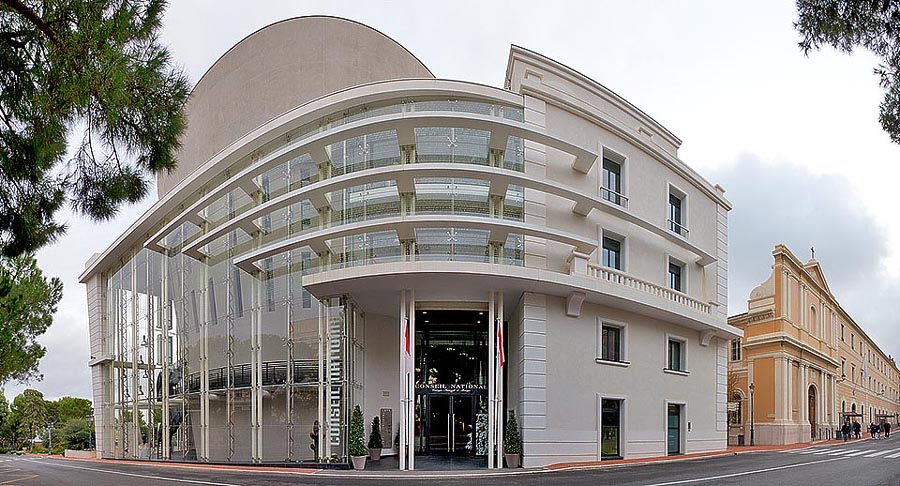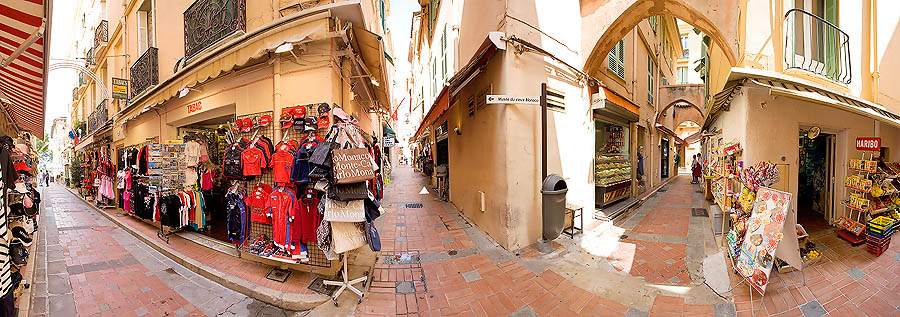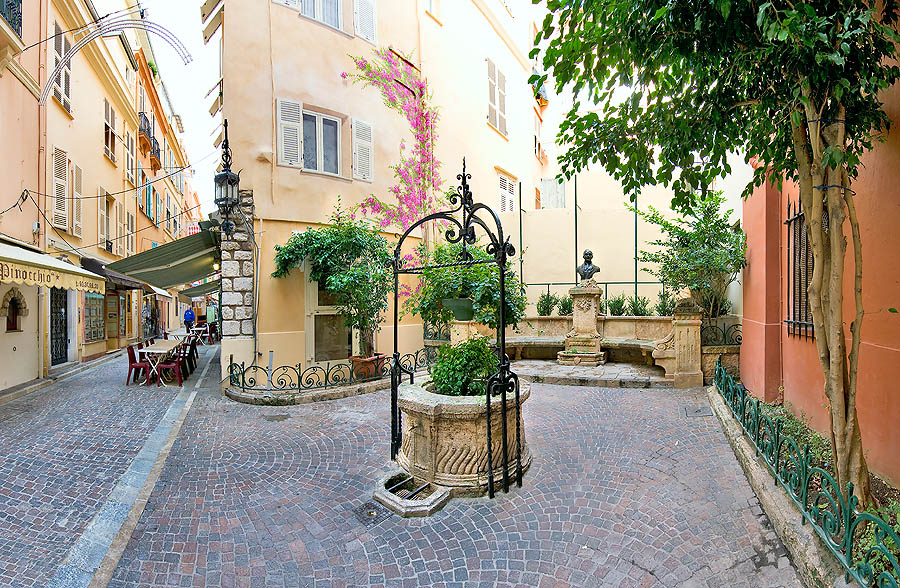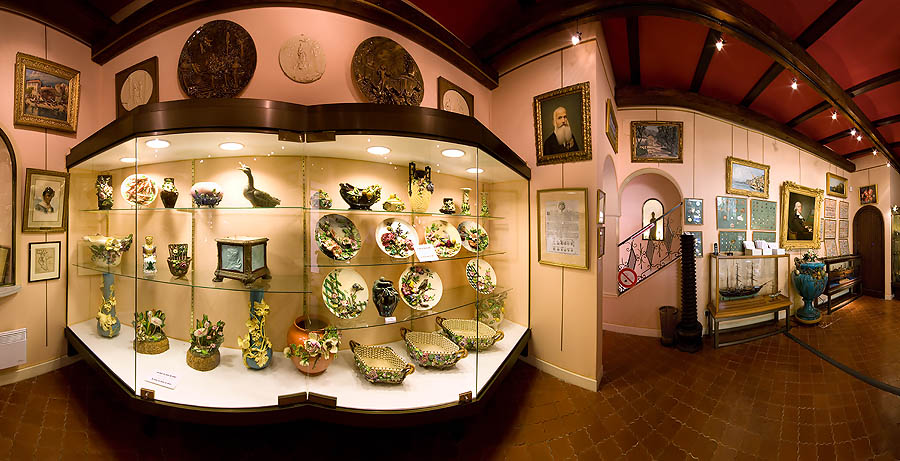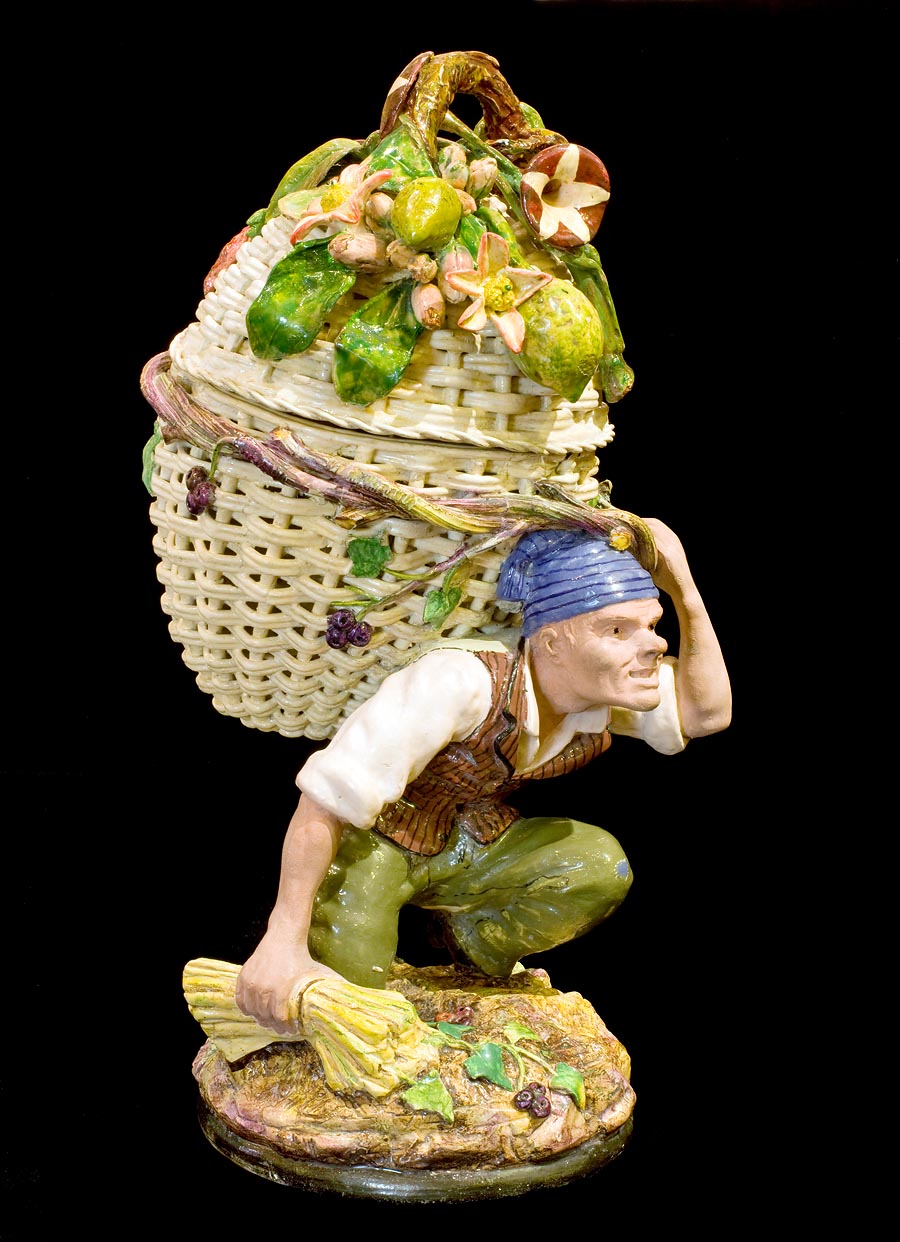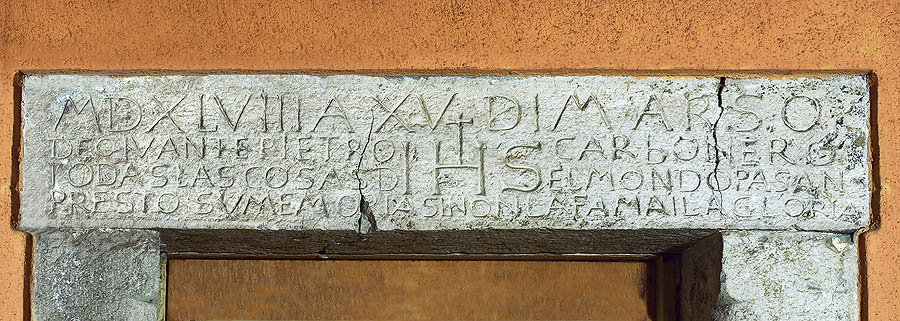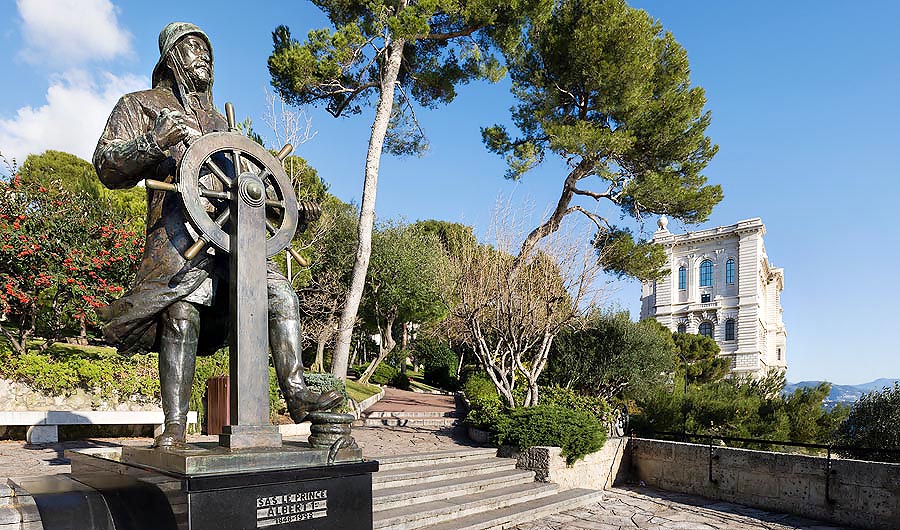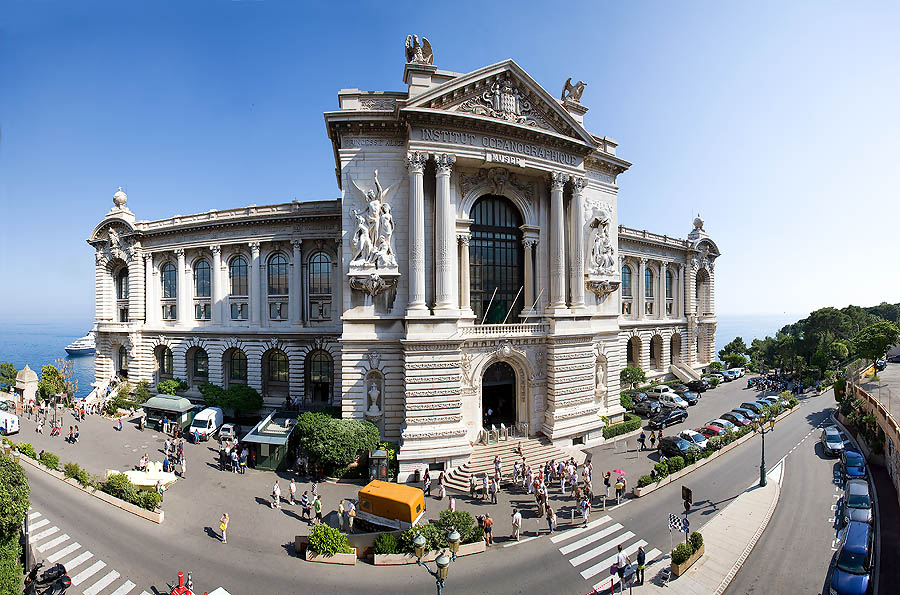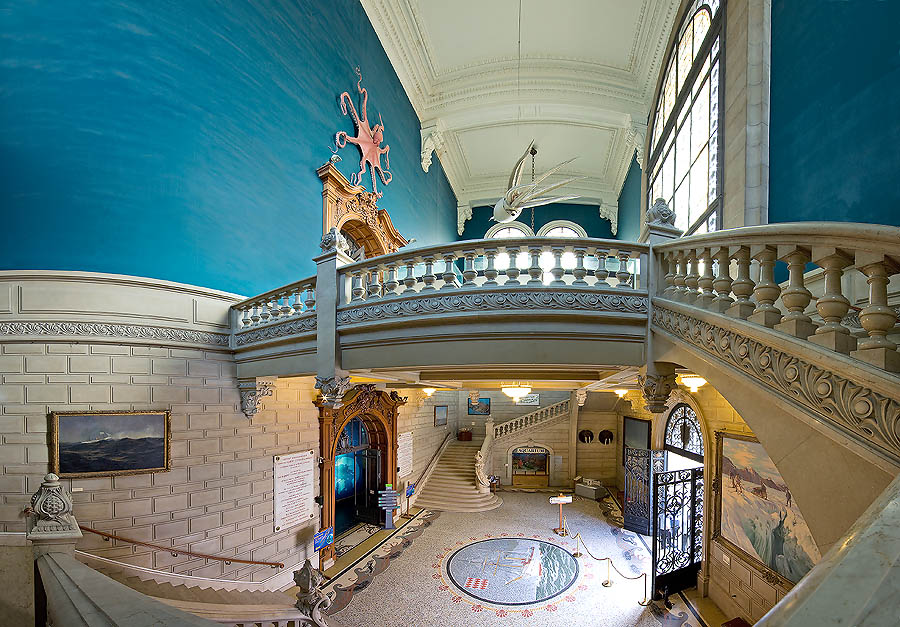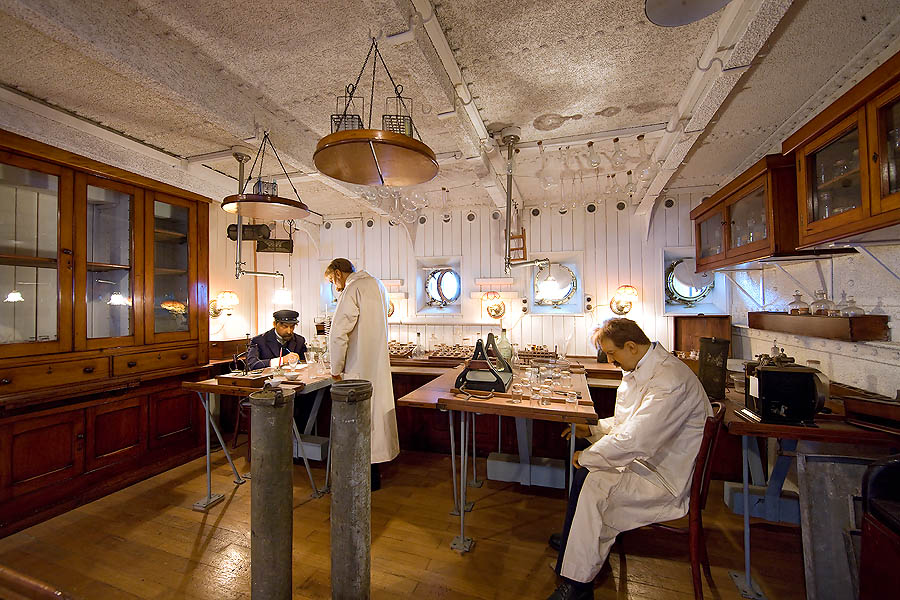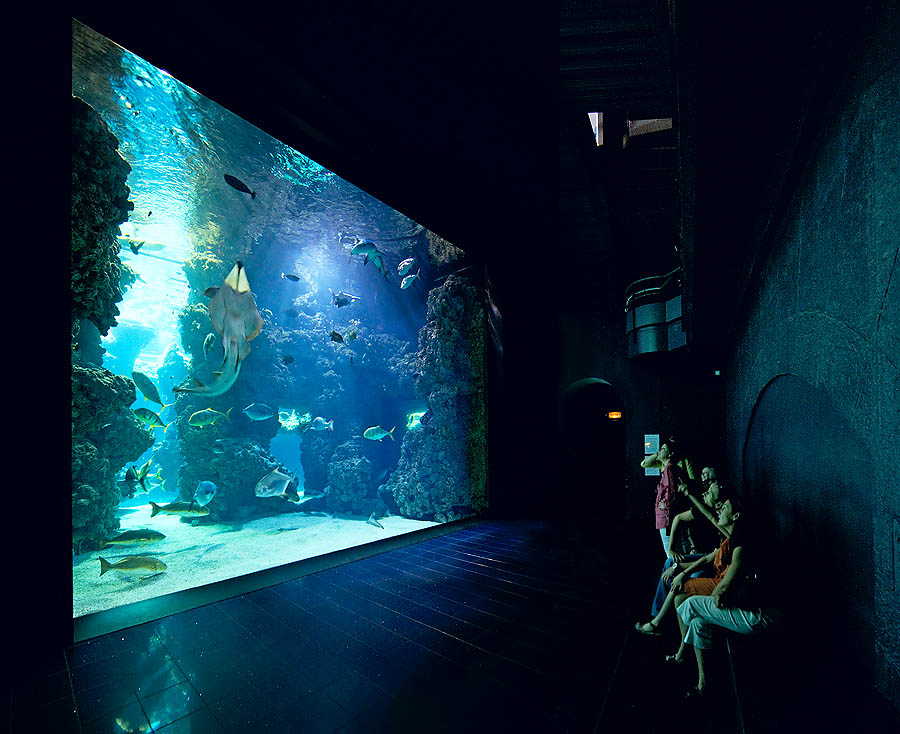Panoramic views and giant photos visible on three grades of enlargement
© Dr Giuseppe Mazza
The reproduction even partial of the photos without the author’s written permission is forbidden
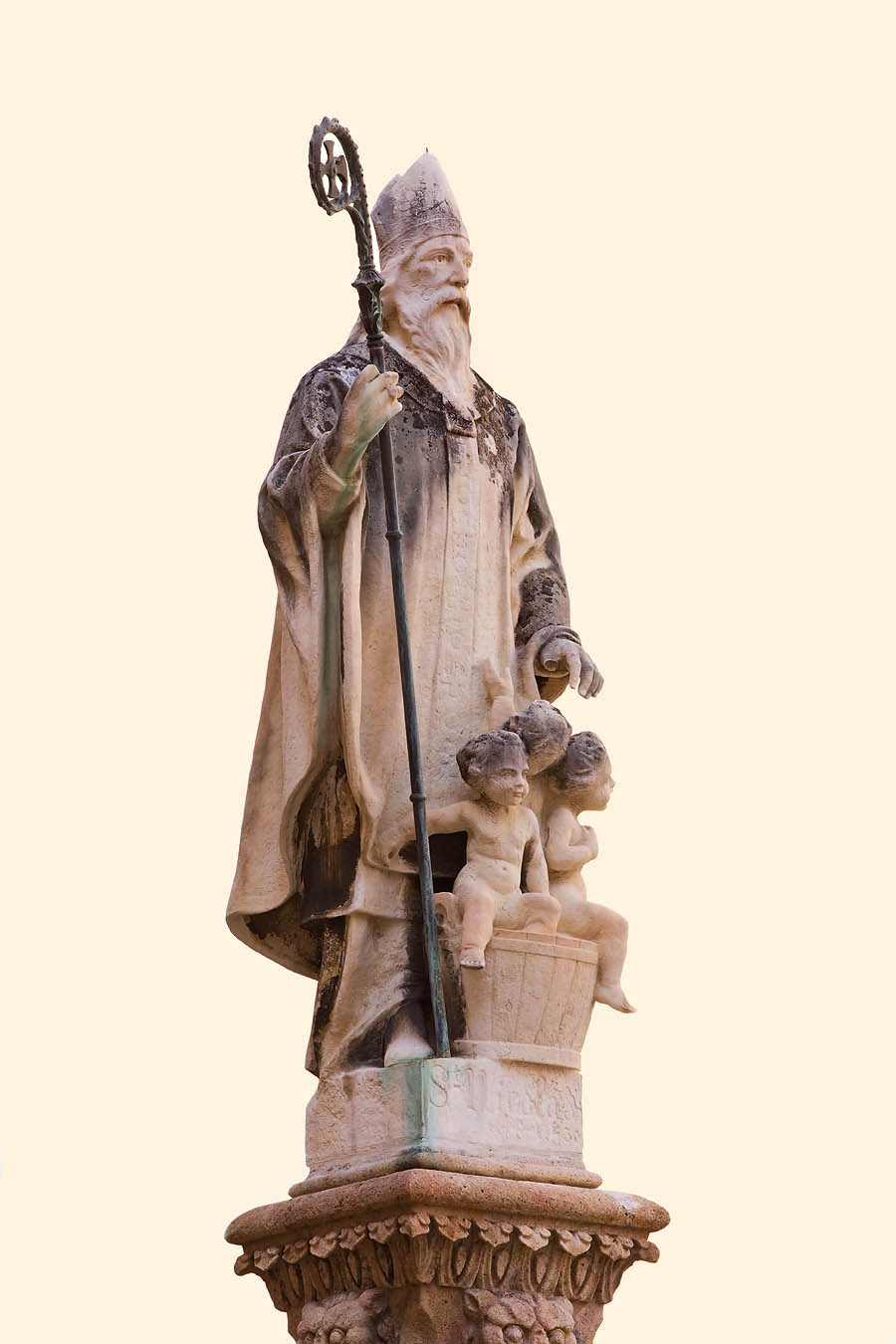
Bassignani’s work, the statue of St. Nicholas, patron of seamen and children, and of Monaco along with St. Devota, surmounts the fountain of the square which holds the same name in Monaco-Ville
Several ceramics of the old “Poterie de Monaco” are exposed in the Museum of ancient Monaco, located at the number 2 of Emil de Loth street in Monaco Ville.
The most valued pieces are those realized by Ernesto Sprega (1829-1911), who was its director from 1883 to 1889. Of Roman origin, he was a pupil of the famous master Mantovani, and later operated in Florence for Ginori, eminent painter and ceramist.
Ernesto Sprega, shown in the self-portrait on top at the right of the show-case, created, during his stay in Monaco, several ceramics and paintings.
He made himself known mainly for the “cannage”, an absolutely personal technique giving the pots and baskets a graceful look, very similar to the true ones, pleached with straw and rushes. This technique, along with his never-ending research for new forms and colours, brought him several acknowledgements while representing Monaco in International Exhibitions.
Besides as talented ceramist, Ernesto Sprega is to be remembered for his numerous frescoes in the Palatine Chapel and in the Private Apartments of the Princes’ Palace.
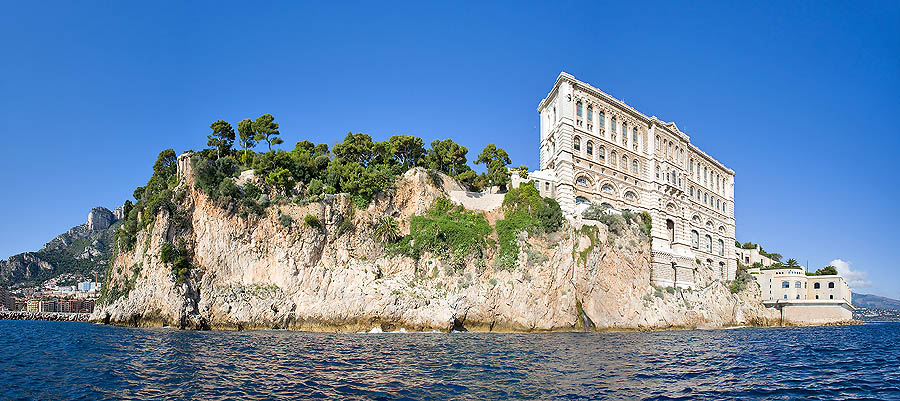
Rightly called “The Temple of the Sea”, the Oceanographic Museum magically unites as one body with the impressive scenery of the Rock of Monaco as seen from the open sea.
The famous Oceanographic Museum is a neo-classic work of the architect Paul Delefortrie. Built between 1899 and 1910, under the rule of Prince Albert I, it has a monumental façade with great sculptures by Gustave Dussart.
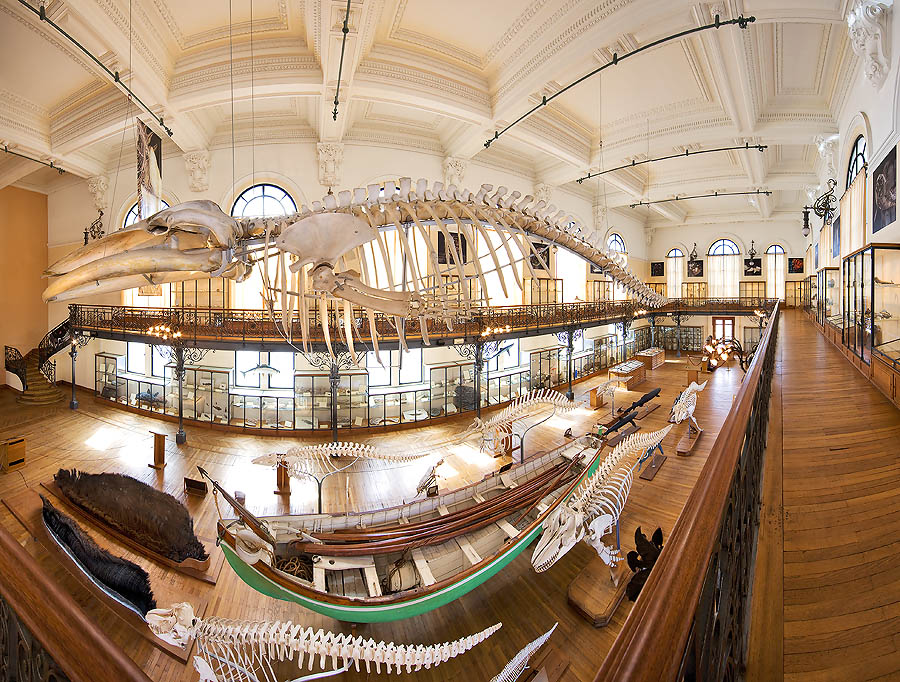
Monaco-Ville: the “hall of the whale” of the Oceanographic Museum with skeletons of Balaenoptera physalus, Pseudorca crassidens, and Orcinus orca.
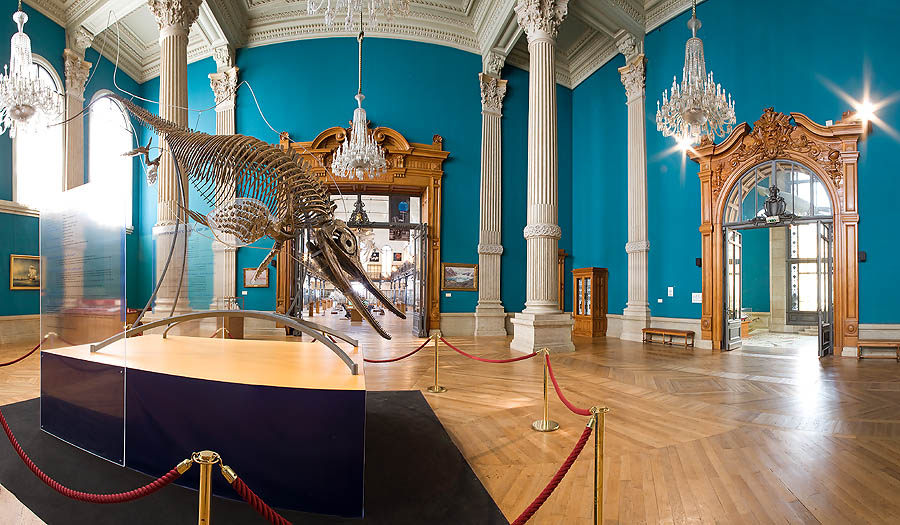
Monaco Oceanographic Museum: exposition of Ophthalmosaurus anna, a fossil of a sea reptile born 150 millions of years ago.
Other enlargeable panoramic views of the Principality of Monaco

